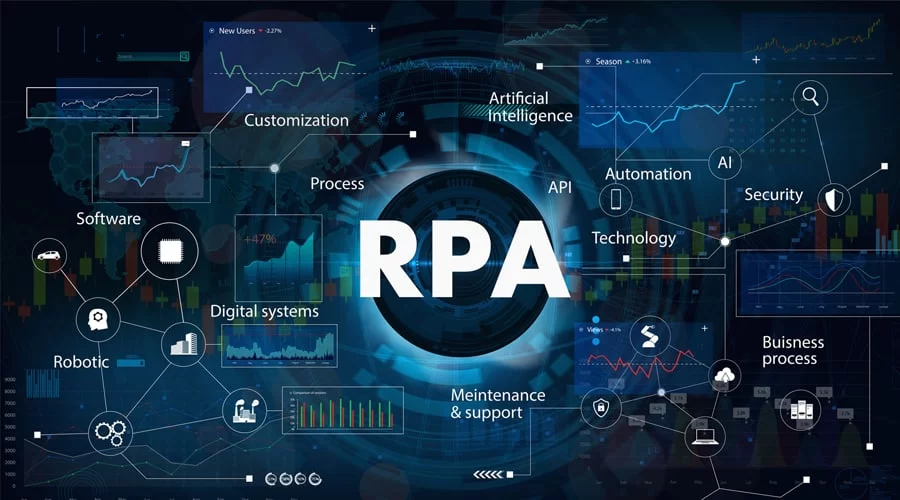- By 2025, Analytics Insight projects that the market for digital transformation technologies will reach up to US$252 billion.
For digital transformation, RPA and process mining ensure efficiency and higher production. Business ecosystems are being overtaken by innovative and transformational technology. Whatever the organization’s objectives, digital transformation is essential for success.
Business ecosystems are being overtaken by innovative and transformational technology. Whatever the organization’s objectives, digital transformation is essential for success. It is the only way to react to business and work system disruptions. Technology integration into daily business operations is currently a need rather than a choice for companies looking to acquire a competitive edge. Better machine and organisational collaboration, more individualised consumer engagement, increased staff productivity and engagement, and precise data insights that support corporate success are all made possible by digital transformation. Organizations can change their operating models and improve business outcomes thanks to the trend toward digitalization and the adoption of all digital platforms while streamlining and improving business operations. Robotic process automation (RPA), a developing technology, can aid in the digital transition. Many companies are seeking for ways to implement this transformation in order to meet the demands of customers and rivals. But concentrating solely on one element, such as the RPA, will not be sufficient to see the wider picture and will only result in chaotic procedures and tactics that fall short of the ROI that was anticipated. Businesses should concentrate on process mining to optimise their operations and boost productivity.
In what ways do RPA and process mining support digital transformation then?
RPA is being used in a variety of industries, including finance, insurance, legal, manufacturing, and utilities, to automate arduous, time-consuming, and high volume back-office tasks. RPA is used to automatically handle processes including order and claim processing, human resource management, data transmission and mitigation, and invoicing.One of the best technologies for implementing digital transformation in firms is this one. RPA enables businesses to address operational difficulties. RPA’s automation capabilities can assist businesses in implementing digital initiatives that increase the effectiveness and agility of operational processes. Additionally, its big data analytics skills can assist businesses in learning more about industry trends and shifting consumer preferences. RPA software robots are trained to imitate employee behaviour, starting with simple activities like copying and pasting and progressing to more complicated workflows and invoicing.Similar to how a real employee would carry out the activities, but more quickly and accurately. Process mining aids firms in determining which procedures and tactics should be put into place right away, what modifications are required, and whether the digitalization being done will endure for a longer period of time. Process mining will only improve RPA’s capabilities, work in tandem with it, and increase efficiency. With built-in interfaces, process mining software and tools can access data directly from information systems like ERP, CRM, and BPM systems. In any industry, it can also be utilised for KPI reporting. Process adjustments for event kinds, resource changes, and flow changes can help businesses gather important information.For every stage of the good automation journey, businesses are investing in a wide range of product classes. Process mining is used for pipeline management, cost-effective administration of synthetic intelligence, centralised corporate course for CoE repository management, and executives for course of identification. To achieve digital transformation, businesses must involve employees and executives in the programme so that they can comprehend and train the machines according to the organization’s goals and explain the digital changes to every employee. This will ensure that all employees contribute equally and effectively to achieving the desired goals.


 WhatsApp us
WhatsApp us